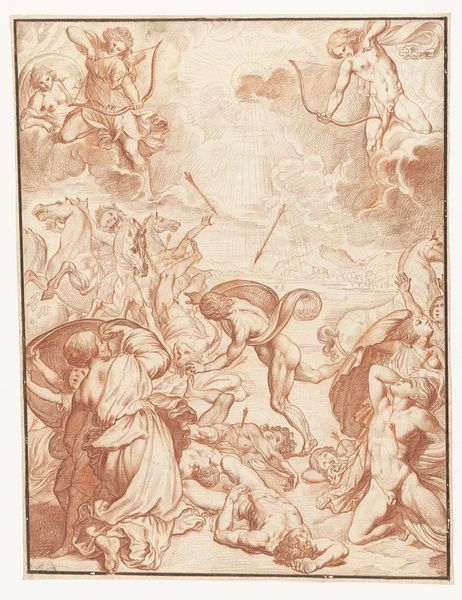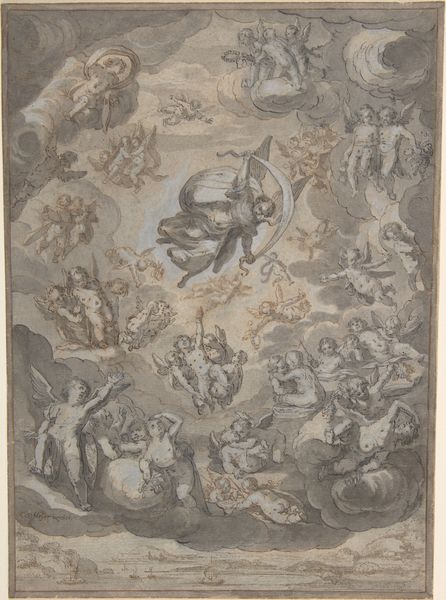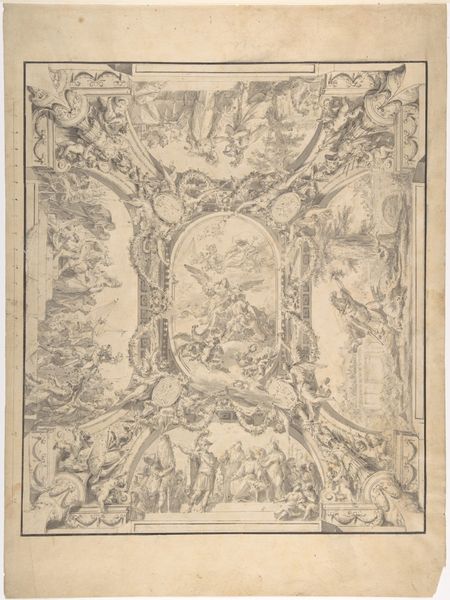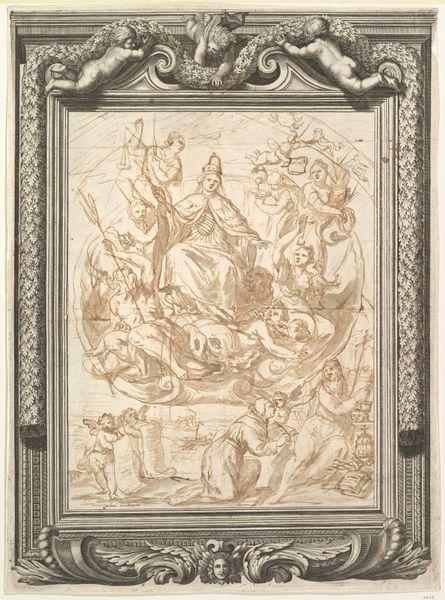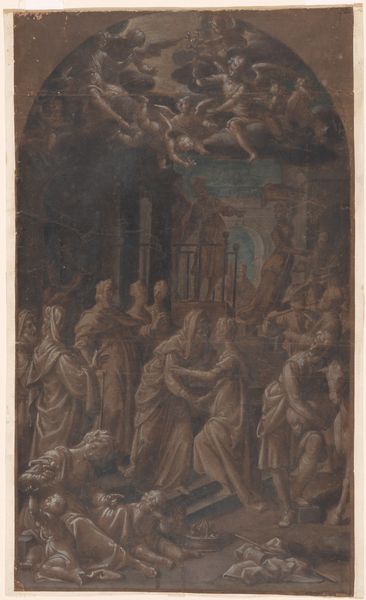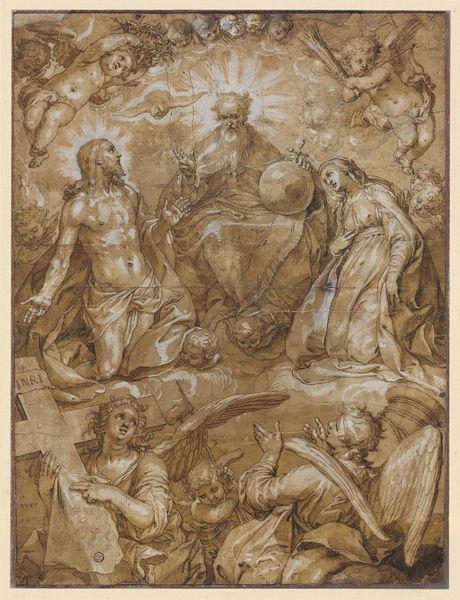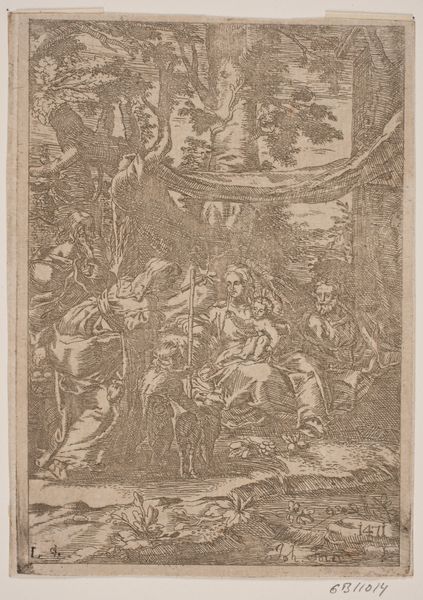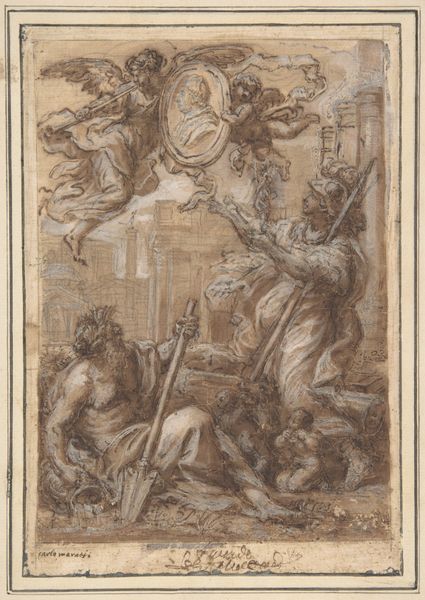
drawing
#
drawing
#
toned paper
#
charcoal drawing
#
possibly oil pastel
#
charcoal art
#
oil painting
#
fluid art
#
acrylic on canvas
#
coffee painting
#
underpainting
#
watercolor
Dimensions: 413 mm (height) x 237 mm (width) (bladmaal)
Editor: So, this drawing is called "Paradis," made sometime between 1560 and 1620 by Antonio Viviani. It's currently held at the Statens Museum for Kunst. Looking at this sepia-toned drawing, I’m immediately struck by how dreamlike and swirling it feels, like a coffee stain brought to life. What leaps out at you when you see it? Curator: Coffee stain! I love that! It does have that ephemeral quality, doesn't it? For me, "Paradis" feels like glimpsing a memory, a half-forgotten story struggling to surface. Viviani packs so much emotion and detail into what is, essentially, a brown drawing on paper. What I find compelling is how he captures the sheer, overwhelming idea of Paradise – it's not a tranquil garden, but a vibrant, almost chaotic swirl of figures and forms. Do you get that sense of organized chaos too? Editor: Definitely! It's not the serene paradise I pictured as a kid. There are so many people, all vying for attention. How does that all contribute to the narrative? Curator: Exactly. Look at how the figures seem to ascend, swirling upwards towards that central cloud where you have God the Father, Jesus and the dove representing the Holy Spirit, a bird representation of it. Down below, the earthly figures seem almost to plead, their expressions full of longing and hope. To me, it's less a depiction of paradise found and more a portrayal of the yearning to attain it. Did anything catch your eye in particular? Editor: I am curious about that figure holding the what seems to be a window? Or some kind of frame. Curator: Ah, the grid! To me, this signals the contrast between the earthly and ethereal. While heaven seems a never-ending swirl of light, humans on earth have defined concepts for measuring and making sense of everything surrounding them. Maybe the figures on earth can only see a glimmer of what’s coming their way. What do you think about the figure, now? Editor: Wow, seeing it like that, really transforms my perception. Initially, it just seemed like a busy composition, but now I see all these nuanced layers of meaning. Thank you! Curator: My pleasure. It's always interesting how a little historical and contextual understanding can unlock entirely new depths in a work of art, right?
Comments
No comments
Be the first to comment and join the conversation on the ultimate creative platform.
